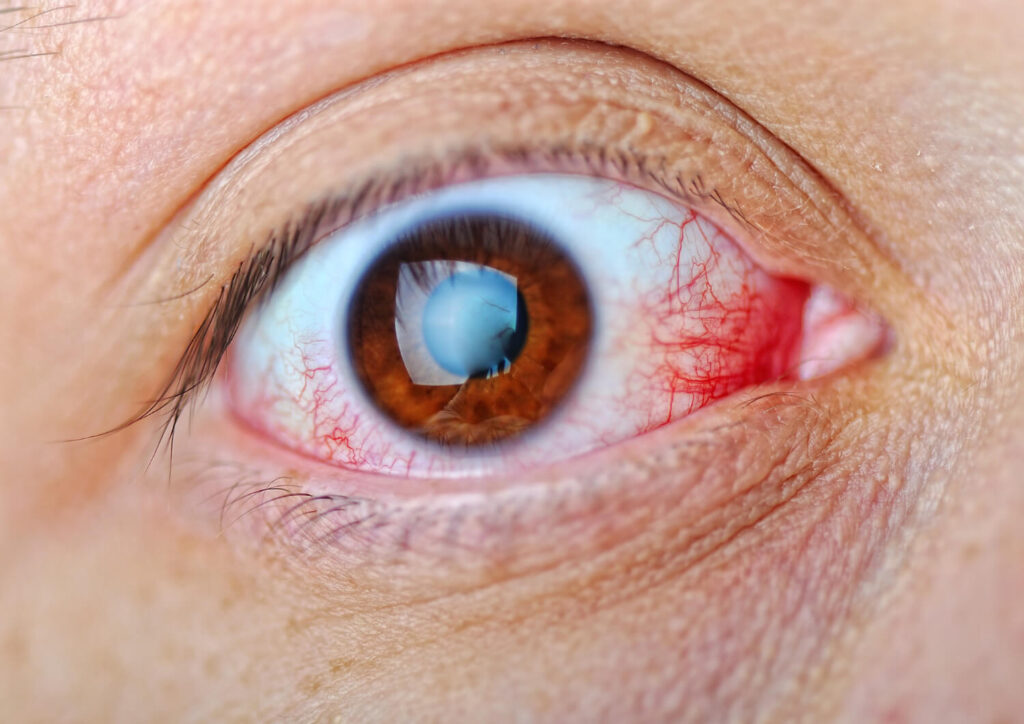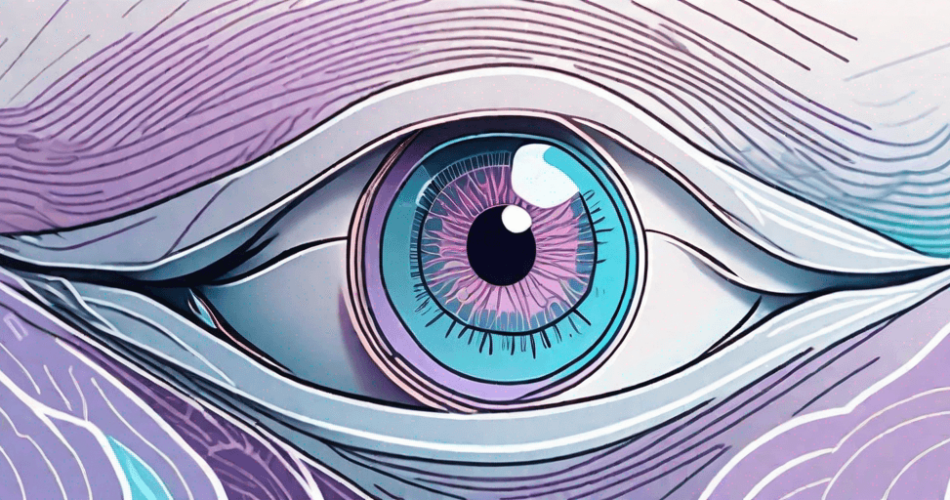Diabetic retinopathy is a serious eye condition that affects individuals with diabetes. It is important to fully understand this condition, especially its impact on vision and risks involved.
Arm yourself with knowledge with this blog to protect your vision and minimize the effects of diabetes.
Understanding Diabetic Retinopathy

What is Diabetic Retinopathy?
The diabetes complication like diabetic retinopathy is a specific type of eye disease that affects the retina. It occurs when high blood sugar levels associated with diabetes damage the retina blood vessels, resulting in a variety of visual problems. If left untreated, diabetic retinopathy can lead to vision loss and even blindness.
The retina plays a crucial role in vision, as it converts light into electrical signals that are sent to the brain through the optic nerve. When the blood vessels are damaged, they can leak fluid or bleed, causing the retina to swell. Thus, affecting its ability to function properly. Due to this complication, it can lead to blurred or distorted vision, floaters, and even complete loss of vision in severe cases.
Causes of Diabetic Retinopathy
The primary cause of this complication is uncontrolled diabetes. When blood sugar levels are consistently high over time, it can damage the small blood vessels in the retina. Additionally, abnormal new blood vessels may form, which can further contribute to vision problems.
While uncontrolled diabetes is the main cause of diabetic retinopathy, other factors can also increase the risk of developing this condition. These factors are occurrence of high blood pressure and high cholesterol levels.
On the other hand, people with long-term effect of diabetes can also result in the eye condition. In short, the longer an individual has diabetes, the higher the likelihood of developing diabetic retinopathy.
Patients with diabetes must be well aware of their current condition to prevent its progression. Visiting a doctor for diabetes can help analyze the severity, and help manage it before it affects their vision.
The Connection Between Diabetes and Retinopathy
It is essential for individuals with diabetes to understand this connection and take proactive steps to manage their condition effectively. Managing diabetes involves a series of lifestyle and diet changes to prevent further complications such as diabetes retinopathy.
As mentioned, a patient with diabetes is a possible candidate to this condition. That is possible for both type 1 and 2 diabetes patient.
In this case, high sugar content in the blood can lead to blockage. This blockage prevents the blood flow, which deteriorates the retina. Thus, resulting in various eye complications.
The Impact of Diabetic Retinopathy on Vision
As the condition progresses, it can lead to various symptoms and long-term effects that significantly affect a person’s ability to see clearly. Discover these signs to prepare for the possible complications.

Early Symptoms of Vision Loss
In its early stages, diabetic retinopathy may not cause noticeable symptoms. This can make it challenging for individuals to detect the problem early on. However, as the condition progresses, symptoms may start to manifest. These crucial warning signs should prompt individuals to seek medical attention and prevent further vision loss.
One of the most common early symptoms is blurred vision. This occurs because the damaged blood vessels in the retina affect its ability to receive and transmit clear images to the brain. As a result, individuals may experience a gradual decline in their visual acuity, making it difficult to see objects or read text with clarity.
Another symptom that may arise is the presence of floaters. These are dark spots or strings that appear to float across a person’s field of vision. They can be distracting and may interfere with the ability to focus on objects. Floaters are caused by bleeding or leaking of fluid from damaged blood vessels in the retina, which creates small particles that cast shadows on the retina.
Difficulty seeing at night is also a common early symptom of diabetic retinopathy. This is known as night vision problems and can make it challenging to navigate in low-light environments. The damaged blood vessels in the retina can affect the eyes’ ability to adjust to changes in lighting conditions, leading to reduced night vision.
Long-term Effects on Vision
Without proper management and treatment, diabetic retinopathy can lead to severe and permanent vision loss. The long-term effects of the condition can be devastating, affecting various aspects of a person’s visual function.
One of the complications that can arise is diabetic macular edema. This occurs when the damaged blood vessels in the retina leak fluid, causing the macula, which is responsible for central vision, to swell. As a result, individuals may experience a significant decrease in their ability to see fine details, read, or recognize faces.
In addition to macular edema, abnormal blood vessel growth can occur in advanced stages of diabetic retinopathy. This is known as proliferative retinopathy and can lead to the formation of scar tissue and retinal detachment. Scar tissue can pull on the retina, causing it to detach from the back of the eye. When this happens, vision loss can be severe and irreversible.
It is important for individuals with diabetes to monitor their blood sugar levels and undergo regular eye examinations to detect and manage diabetic retinopathy early. By doing so, they can minimize the impact of the condition on their vision and maintain optimal eye health.
Diagnostic Tests for Diabetic Retinopathy

Regular eye exams are crucial for the early detection and diagnosis of diabetic retinopathy. These exams allow eye care professionals to assess the health of the retina and identify any signs of the disease. For individuals with diabetes, it is recommended to undergo a comprehensive eye exam at least once a year or as advised by their healthcare provider.
Here are some of the tests to consider:
Dilated eye exam
A dilated eye exam is a common diagnostic test used to assess the health of the retina in individuals with diabetic retinopathy. This exam involves the use of eye drops to dilate the pupils, allowing the eye care professional to get a clear view of the retina and check for any abnormalities. It helps in identifying early signs of the disease, such as the presence of microaneurysms or tiny blood vessels that leak fluid.
Optical Coherence Tomography (OCT)
In addition to the dilated eye exam, optical coherence tomography (OCT) is another valuable diagnostic tool. This non-invasive imaging test uses light waves to capture detailed cross-sectional images of the retina. It provides information about the thickness and structure of the retina, helping in the diagnosis and monitoring of diabetic retinopathy. OCT can detect swelling or thickening of the retina, as well as the presence of fluid or blood leakage.
Fluorescein Angiography
Fluorescein angiography is a specialized diagnostic test that involves the injection of a fluorescent dye into a vein in the arm. The dye travels to the blood vessels in the retina, and a special camera takes rapid-fire photographs as the dye circulates. This helps in identifying any abnormal blood vessels or leakage in the retina, which are characteristic features of diabetic retinopathy. Fluorescein angiography provides valuable information about the location and extent of the disease, aiding in the development of an appropriate treatment plan.
By combining the results of these diagnostic tests, eye care professionals can gain a comprehensive understanding of the severity and progression of diabetic retinopathy. This information is crucial in determining the most appropriate treatment approach, which may include laser therapy, medication, or surgery. Regular eye exams and diagnostic tests play a vital role in the early detection and management of diabetic retinopathy, helping to preserve vision and prevent complications.
Treatment Options for Diabetic Retinopathy
Lifestyle Changes and Their Impact
One of the primary treatment goals for diabetic retinopathy is controlling diabetes through lifestyle changes. This includes maintaining healthy blood sugar levels, managing blood pressure and cholesterol levels, quitting smoking, and following a balanced diet. These modifications can have a significant impact on slowing down the progression of diabetic retinopathy and preserving vision.
Medications for Diabetic Retinopathy
Various medications may be prescribed to manage diabetic retinopathy. Anti-VEGF drugs, steroids, and laser therapy are commonly used to reduce swelling, prevent abnormal blood vessel growth, and promote overall retinal health. These medications aim to preserve vision and prevent further deterioration.
Surgical Treatments and Procedures
In certain cases, surgical interventions may be necessary to address advanced stages of diabetic retinopathy. Procedures like vitrectomy, in which the gel-like substance inside the eye is removed and replaced, can help repair retinal detachments or remove scar tissue. Photocoagulation, which uses laser energy to seal leaking blood vessels, is another surgical option.
Preventing Diabetic Retinopathy
Importance of Blood Sugar Control
Maintaining stable blood sugar levels is crucial in preventing the development and progression of diabetic retinopathy. This involves following a comprehensive diabetes management plan, which may include medication, insulin therapy, regular exercise, and dietary adjustments. By proactively managing blood sugar, individuals can significantly reduce their risk of developing diabetic retinopathy.
Regular Exercise and Healthy Diet
Engaging in regular physical activity and consuming a well-balanced, nutrient-rich diet are important for overall diabetes management and reducing the risk of diabetic retinopathy. Exercise helps control blood sugar levels, while a healthy diet contributes to better overall health and reduces the likelihood of complications, including diabetic retinopathy.
Regular Follow-ups and Eye Examinations
Lastly, scheduling regular follow-up appointments with healthcare providers and eye care professionals is essential for monitoring the progression of diabetes and diabetic retinopathy. These appointments allow for timely intervention and adjustments to treatment plans, ensuring that any emerging issues are addressed promptly.
Final Takeaway
In conclusion, understanding diabetic retinopathy is crucial for individuals with diabetes. By recognizing its severe nature, patients can define the suitable preventive measures needed. Furthermore, this knowledge can lead them to trusted doctors as they guide the patients towards health and wellness.
If several symptoms for diagnosing this condition is present, it would be best to connect with the best doctor for diabetes to begin prevention steps. Book a consultation with a doctor today!



